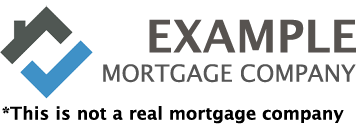

Home Equity Lines of Credit (HELOCs) provide flexible access to your home's equity, but understanding the tax implications requires careful attention to IRS rules. While HELOC interest can be tax deductible, specific requirements determine whether you qualify for this benefit.
The Basic Rule for HELOC Tax Deductibility
HELOC interest is tax deductible only when you use the funds to buy, build, or substantially improve the home that secures the loan. This requirement, established by the Tax Cuts and Jobs Act of 2017, applies to loans originated after December 15, 2017, and remains in effect through 2025.
Qualifying uses include:
Renovating your kitchen, adding a bathroom, finishing a basement, replacing your roof, adding a room addition, upgrading electrical or plumbing systems, installing energy-efficient windows or HVAC systems, or building a deck or other permanent structure.
Non-qualifying uses include:
Consolidating credit card debt, paying for college tuition, purchasing a vehicle, funding vacations, covering medical expenses, or paying for weddings or other personal expenses.
The distinction is clear: the funds must directly improve the property securing the HELOC. Using HELOC proceeds for any other purpose, regardless of how financially prudent, eliminates the tax deduction.
Understanding the Debt Limit
The IRS caps the total qualified residence debt on which you can deduct interest at $750,000 for single filers and married couples filing jointly, or $375,000 for married individuals filing separately. This limit applies to your total qualifying mortgage debt, not just your HELOC.
How the limit works. If your first mortgage balance is $600,000 and you have a $100,000 HELOC used for home improvements, your total qualified debt is $700,000—below the $750,000 threshold. All interest on both loans is potentially deductible (subject to other requirements).
However, if your first mortgage is $700,000 and you have a $100,000 HELOC for home improvements, your total debt of $800,000 exceeds the limit. You can only deduct interest on $750,000 of that debt.
Calculating Deductible Interest When Exceeding Limits
When your qualified mortgage debt exceeds $750,000, you must calculate the deductible portion proportionally.
Example calculation: You have $1 million in total qualified mortgage debt and paid $12,000 in interest during the tax year. Your deductible interest equals:
($750,000 ÷ $1,000,000) × $12,000 = $9,000
You can deduct $9,000 of the $12,000 interest paid, with the remaining $3,000 being non-deductible.
Requirements for Claiming the Deduction
You must itemize deductions. HELOC interest deductions only benefit taxpayers who itemize rather than taking the standard deduction. For tax year 2024, the standard deduction is $14,600 for single filers and $29,200 for married couples filing jointly. If your total itemized deductions (including mortgage interest, state and local taxes, charitable contributions, and medical expenses) don't exceed the standard deduction, itemizing provides no benefit.
You must secure the loan with your home. The HELOC must be secured by your primary residence or second home. Investment properties follow different rules.
You must use funds for qualified purposes. Keep detailed records documenting how you spent HELOC proceeds. The IRS may require proof that funds went toward home improvements rather than other expenses.
Documentation Requirements
Maintain comprehensive records supporting your HELOC interest deduction:
Loan documents showing the property securing the HELOC and the loan amount.
Receipts and invoices for all home improvement projects funded with HELOC proceeds, including contractor invoices, materials receipts, and permits.
Bank statements demonstrating the flow of HELOC funds to contractors or home improvement stores.
Before and after photos of renovation projects, which can help substantiate improvement claims.
Form 1098 from your lender reporting interest paid during the tax year.
The IRS can audit tax returns for several years, so maintain these records long-term.
Special Situations and Considerations
Mixed-use HELOCs. If you use a portion of your HELOC for qualifying improvements and a portion for non-qualifying purposes, only the interest on the qualifying portion is deductible. You must calculate the proportional interest attributable to home improvements.
Refinancing a HELOC. If you refinance your HELOC, the same rules apply. Interest remains deductible only if the refinanced loan amount (or the portion used for home improvements in the original HELOC) funded qualifying home improvements.
Second homes. Interest on HELOCs secured by your second home qualifies for deduction under the same rules, provided you use the funds to improve that property. The combined debt on your primary residence and second home cannot exceed the $750,000 limit.
Investment properties. Different rules apply to HELOCs on investment properties. While this interest may still be deductible, it's claimed as a rental expense rather than mortgage interest deduction, subject to separate limitations.
Alternative Home Equity Financing Options
If a HELOC doesn't suit your needs, consider these alternatives that follow the same tax deduction rules:
Home equity loans. These provide a lump sum payment rather than a revolving line of credit. Interest is potentially tax deductible under the same criteria—you must use funds to buy, build, or improve your home.
Cash-out refinancing. This replaces your existing mortgage with a larger loan, providing cash from the difference. If you use the cash-out proceeds for home improvements, that portion of your interest may be tax deductible.
Personal loans. These don't require home equity and don't put your home at risk, but interest is never tax deductible regardless of how you use the funds.
Each option has distinct advantages and disadvantages beyond tax considerations, including interest rates, fees, repayment terms, and risk levels.
State Tax Considerations
Federal tax rules govern deductibility for federal income tax purposes, but state tax treatment varies. Some states conform to federal rules, allowing the same deductions. Others have different rules that may provide more or less generous deductions.
Check your state's tax code or consult with a tax professional familiar with your state's rules to understand both your federal and state tax implications.
Planning for Tax Efficiency
Time your home improvements strategically. If you're planning multiple projects, consider whether completing them in one tax year or spreading them across years optimizes your tax situation based on your other deductions.
Consider the standard deduction threshold. If you're close to the standard deduction amount, strategically timing deductible expenses (including HELOC interest, charitable contributions, and medical expenses) into one year might push you over the threshold, making itemizing worthwhile.
Don't let the tax tail wag the financial dog. While tax deductions provide benefits, don't take on debt solely for tax purposes. The deduction reduces your cost but doesn't eliminate it. You're still paying significantly more in interest than you save in taxes.
Working with Tax Professionals
Tax laws change frequently, and individual circumstances vary widely. Working with a qualified tax professional ensures you:
Accurately determine which expenses qualify for deductions, properly calculate deductible amounts when limits apply, maintain appropriate documentation, optimize your overall tax strategy, and stay compliant with current tax laws.
The cost of professional tax advice typically pays for itself through accurate filing and optimized deductions.
Common Mistakes to Avoid
Assuming all HELOC interest is deductible. The use of funds determines deductibility, not the loan type. Many borrowers mistakenly believe HELOC interest is automatically deductible.
Poor record-keeping. Without documentation proving you used funds for home improvements, the IRS may disallow your deduction during an audit.
Ignoring the debt limit. Taxpayers with substantial mortgage debt sometimes deduct interest on amounts exceeding the $750,000 limit, creating audit risk.
Not comparing itemizing to the standard deduction. Some taxpayers itemize out of habit even when the standard deduction provides greater benefit.
The Bottom Line
HELOC interest can be tax deductible when you use the funds to buy, build, or substantially improve your home, subject to qualified debt limits and itemization requirements. This deduction can provide meaningful tax savings for homeowners undertaking significant renovations or improvements.
However, tax benefits should be one consideration among many when deciding whether to use a HELOC. Interest costs, repayment terms, risk to your home, and your overall financial situation all matter more than potential tax deductions.
Get Expert Guidance on Home Equity Financing
Understanding the tax implications of HELOCs requires expertise in both mortgage lending and tax law. Our lending professionals can help you understand your home equity options and structure financing to support your goals. While we provide information about tax considerations, we recommend working with a qualified tax advisor to understand how HELOC interest deductions apply to your specific tax situation. Contact us today to explore your home equity financing options and determine which solution best fits your needs.

